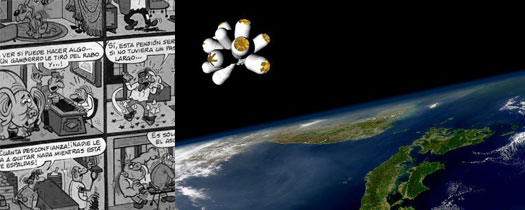
Marco Polo was an explorer, so was Ali Bey. They were pioneers who dared to go where very few people had ever been before and then went on to publicise their travels and talk about them. There were many who travelled in the past, but only a few of them actually managed to make a record so that we could learn from them. They wrote about their actual travels, not the mere act of travelling, as there were also many others who used to simply travel, just like we continue to do so today.
When starting to think about the hotels we have to build, we decided to look back not at historic hotel architecture, its large or small buildings, and its architectural styles, but rather look at the individuals who travelled in former times. It was then we realised there was a difference between what we could call a traveller and what we now call a tourist. An aspect which caught our attention most and which we decided to recapture by adapting it to our circumstances and times, is the active character of a person who journeys about the world, the traveller, as opposed the more passive tendency of following established routes and routines as a tourist. Our latest projects thus revolve around returning a type of protagonism to people which goes beyond the tendency to treat them as someone who has to be led by the hand and considers them as discerning individuals capable of enjoying an activity. This is where the concept of interactivity appears, an idea we want to transfer to our hotels. This is not only to provide stimuli which will lead to responses being produced, but, more importantly, also to supply tools such as spaces, possibilities and times so that people can interact both with inanimate objects which surround them and with other people they come across in a place such as a hotel.
To turn from the more ethereal to something more urban, let us start by making notes about the role of light and interactivity. We might accept that if something cannot be seen, then it has no reason to exist. Now you see it, now you don’t. On this basis, light is fundamental, not only to make a certain atmosphere real, but also to establish the type of sensation it has in relation to the colour objects reflect. Once such a situation is established, our aim is to give the traveller the chance not only to experience different lighting ambiences, but also to exercise control over them. It should be added that the starting point is always the person and not the room, so in a double room both guests should have the opportunity to exercise separate control over the ambience. If there are two controls, it is bound to produce some kind of dilemma, which irresistibly leads to some kind of communication. Neither impositions or suggestions are accepted, the basis of communication is an action. In this sense there is a certain preoccupation with sustaining the functioning of the hotel, which is based on making the guest the protagonist. Actions traditionally carried out by hotel staff may be left to the guest. For instance, room service actually becomes a self-service area, or an open buffet as it were, where contact is encouraged between guests from different rooms. We regard this as another level of interactivity. It’s not a question of making customers work, rather it is providing them greater control over their environment and providing them with the opportunity to act.
Giving such freedom to the guest means some ideas we have about spaces inside a hotel are brought into confusion as regards fixed elements and mobile ones. This is what we could call the concept of a single-doored hotel. This means the only true door is the one which divides the street from the hotel interior. From there on, more than finding closed spaces and more doors, you will have the possibility of attaining greater intimacy without losing contact with the whole. This leads us to the fact spaces are multifunctional to a certain extent, a third level of interactivity, meaning corridors accept their role as an anteroom for bedrooms and stairways allow for peaceful conversation.
Last of all, the urban character of the building shouldn’t be lost, the indisputable fact that it lies within the city. Just as people should have the tools to interact, the building should also try to establish some kind of communication with the urban context. Coming inside from the outside street, there will always be hotel cafes, or now the healthy trend to recover the tradition of hotel restaurants. This is a strategy which helps to sustain quality cuisine combined with a clientele of travellers staying alongside other travellers or residents in the city. It is a way to reduce the sense of isolation with respect to guests in a hotel. Going outside the hotel from the inside strategies may appear to communicate not the presence of the hotel, but rather the fact that activities are carried out inside. From less to more and going back to little, just like the different lighting ambiences in the room being changed according to the mood of the guests staying in them are transferred to the areas of circulation in order to participate in their changing light configuration, the same light can be noticed from the street, thus involving the passer-by a little in the traveller’s place.
